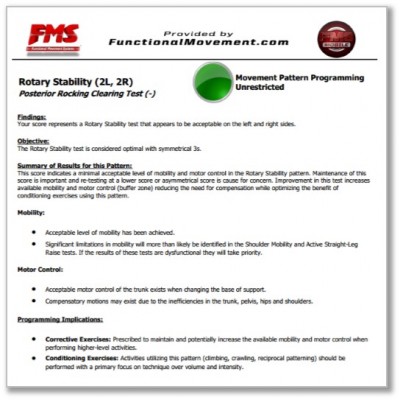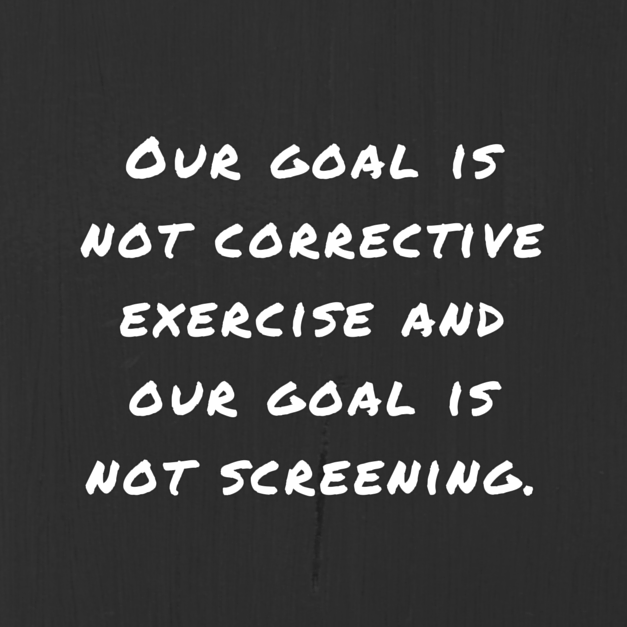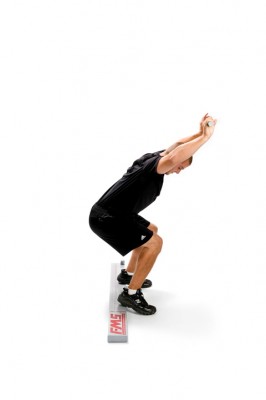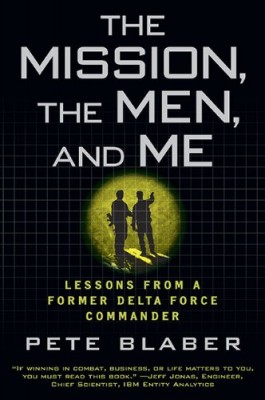Strength Defined
Posted by Gray Cook
Listen Now:
We previously discussed how and where to start looking at movement.
Let’s revisit the three questions I presented and see how you feel now.
If you can’t and you believe that the patterns have some merit, then you should probably be adding it to your toolbox and no, it should never, ever be your only test. As we simply say, “the FMS helps you decide the next test.”

It’s interesting to know their perspective: If they overshoot or undershoot their movement abilities and limitations, it’s likely that they won’t understand the training decisions and programming decisions that you’re making.

Even though many of us may use objective feedback loops for long-term gains or even moderate to short-term gains over a few weeks, do we really have a single session feedback loop?
Remember, my emotional state and the client’s or athlete’s emotional state feed into this single session. We could both be having a bad day and consider it a bad session. We could both be having a good day and consider it a good session. But is it really a good session? Can we build on this or was it simply just another day of burning calories without really changing or developing movement patterns?
Anyone can claim a good session, but it’s professionally rewarding to prove it to yourself. Professional confidence comes from being right, not claiming you’re right.
Basically, the FMS can provide a single session feedback loop. When we find the bottleneck (see Movement for the algorithm to help you find that), it’s great to use a corrective strategy throughout the routine, throughout the exercise program, to confront that problem. As they expend energy through a 30-minute, 45-minute or even an hour session, you’ll see how that corrective, designed to magnify the problem and force them to work through it, opens the movement pattern.
Let’s start with the worst-case scenario. If you have no change at all in the movement pattern, you know exactly what not to do on the next session. The neurological system did not give you a nod, did not give you a thumbs-up and say, “I like the direction you’re going.”
Whereas, if in a single session with only a small percentage of the time dedicated to the corrective you can change that movement pattern, then not only have you demonstrated that you can work a client or athlete through a conditioning session, you have developed a program because of your feedback loop that demonstrated that their bottleneck, their biggest movement dysfunction, was also improved while a conditioning session was underway.
That’s a two-for-one session deal because you boosted metabolism and demonstrated an objective change in movement quality.
Those of us who’ve been developing and refining movement screening have tried to create a functional testing battery that does not make everyone fail and force them to corrective exercise.
Our goal is not corrective exercise and our goal is not screening. Our goal is no negative results from conditioning and professional fitness coaching or athletic coaching. Unfortunately, no single program can achieve this every time for everyone, which is why data is critical to maximizing results through program modification.

In healthcare, wise clinicians protect themselves from subjectivity by understanding the clear difference between signs and symptoms. Obviously we value both and always want to monitor both. The objective signs are a more reliable gauge for treatment and dosage than are subjective symptoms.
Corrective exercise is very similar because our goal is not fitness (adaptation). Our goal is a favorable movement pattern response. The FMS provides that movement sign for feedback against the pre-corrective baseline.
It never ceases to amaze us how many individuals interested in fitness and how many athletes interested in athletic performance have been under the professional direction of a coach or trainer for 12 months and still score a ‘1’ on the movement screen.

Remember, a ‘1’ on the movement screen is the inability to perform a movement pattern that most untrained and uncoached children can perform. You don’t have to do the movement screen perfectly, but you at least need to be able to competently get through the movement regardless of the amount of imperfections that we allow. If the client or athlete can’t even get through the movement pattern, the trainer or coach is either:
Unaware of the problem,
Aware of the problem and doesn’t consider the dysfunction significant, or
Part of the problem.
If that is you, you’ve actually been loading a dysfunction and hitting ‘save’ on a very, very embarrassing document.
The movement pattern that you have with a ‘1’ on the movement screen is considered incompetent by screening standards. You have no competency in this pattern so you’ve been intentionally avoiding it because you don’t understand it. Or, even worse, you’ve been loading it and stressing it, which is probably contributing to the dysfunction instead of being part of the solution.
I’ll leave you with a really interesting book to read. It’s called, The Mission, The Men and Me – Lessons from a Former Delta Force Commander by Pete Blaber. He talks about a meeting with a psychologist to help him through some problem-solving issues. The psychologist gave him three words (first proposed by Hermann Helholtz in the late nineteenth century) to describe creativity. These three words, saturation, illumination and incubation, would help the hemispheres of Blaber’s brain work together to help him problem-solve in a way that allows creativity within moderate structure.
 The psychologist told him that the process of problem solving and the process of thinking start with saturation. Grab some information and pull it in—but consider all sides and not just the information that supports your opinion. Be open, objective and professional.
The psychologist told him that the process of problem solving and the process of thinking start with saturation. Grab some information and pull it in—but consider all sides and not just the information that supports your opinion. Be open, objective and professional.
Once you feel like you’ve got the information that needs to be considered, cut off the information stream and go into incubation. Develop the information. Stop talking. Stop asking questions. Take what you’ve already consumed. Take what’s already been saturated and apply it. Don’t just admire your new tool. See if it works.
Most people who criticize movement screening have not applied it and have not checked the boxes on the questions I’ve asked. They are commenting on a tool that they are not good at using . . . and think that the tool itself if not good. That’s the number one problem we see.
Lastly is illuminate. On the other side of checking those boxes, your illumination would say, ‘that’s not a productive path’ or ‘that is a productive path.’

If you answer those three questions and don’t feel like the Functional Movement Screen provides value to you, then that’s fine. But make sure you go through the process of saturation, incubation and illumination.
Check those boxes. If you can’t, work on it and see if you can. I think you’ll be surprised at what you find.
Posted by Gray Cook
Posted by Jon Torine
Posted by Gray Cook